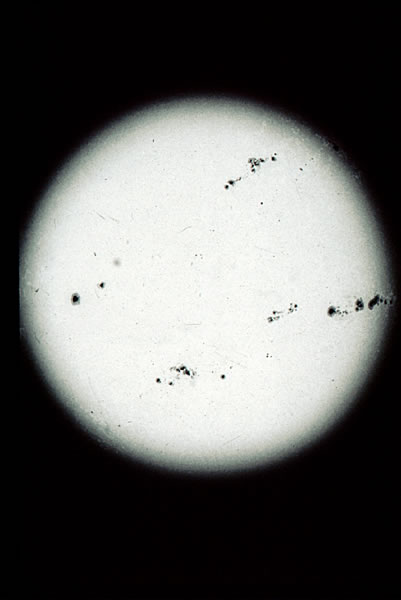Sunspots
Whether you see the northern lights depends on many factors. Being far to the north makes northern lights viewing more likely, except in the summer. But if the Sun becomes very active, the solar wind can be strong enough to cause northern lights to occur surprisingly farther south than normal—visible from southern United States and even Mexico. Activity on the Sun and strength of the solar wind are related to the number of sunspots, dark patches on the surface of the Sun.
VISUAL 30 (still): Sun with Sunspots

Sunspots have been known of for thousands of years. Chinese astrologers observed them large enough to be seen without optical aids as early as 1000 BC. Early observers watched for sunspots as the Sun was setting, when the Sun’s rays were not as intense harmful to the eye. Nowadays, proper solar filters make direct viewing of the Sun safe. Since 1850 it has been known that the number of sunspots varies in an eleven year cycle. The most recent peaks in the cycle, called the solar maximum, happened in 2000 and 2014.
During a solar maximum, there is a possibility for seeing aurora in more of the United States than just northern Alaska. It’s usually rare to see the northern lights in [your city], but let’s watch them again one more time before it’s time to go. This time see if you can capture them on paper!
[Fade off Sun with Sunspots]
If the latitude of your planetarium is below about 50°, seeing northern lights is a big deal—maybe even 60°.

